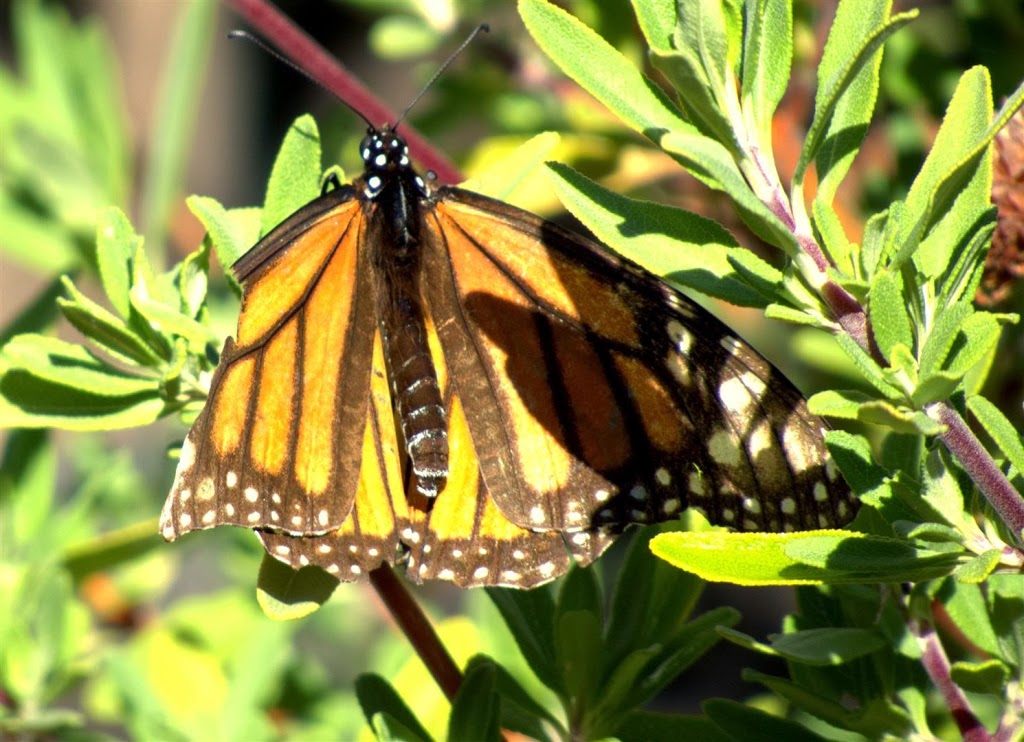It's always a special moment when we see Monarch Butterflies appear. This is the long-lived generation, the Methuselah generation. They have migrated many miles and the females will soon migrate inland to lay their eggs on native milkweed. Here on the Coast, where milkweed isn't native, these beautiful butterflies are feeding on other native plants, such as Manzanitas.
Nancy Scarola noticed one in her Sea Ranch garden last week and her husband, Robert, photographed it. Notice its tattered wings from the many miles it has traveled.
I saw one in my garden today - my first one of the year. Journey North tracks these butterflies. If you would like to participate in this citizen science project, or just see the sightings that other people have posted, here is their link: http://www.learner.org/jnorth/maps/Maps.html You will see they track many other migrations, including Gray Whales.
Thanks to Robert for allowing me to share his photo with you here.





